Nike Significantly Reduces Carbon Footprint, Sustainable Business Summary Shows
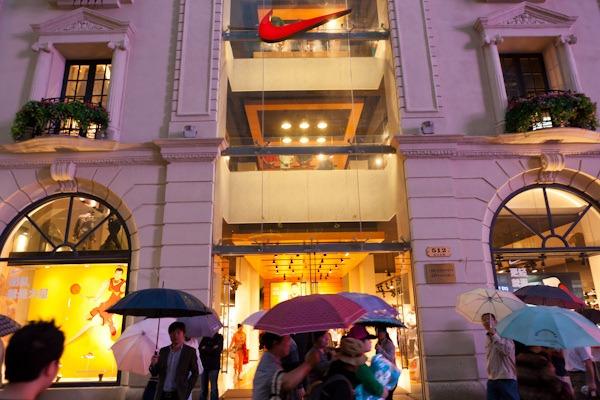

Can a very popular shoe company make strides to be more sustainable while continuing to grow? The latest Sustainable Business Performance Summary by Nike, Inc. proves that a company can grow while doing good for the environment. The summary outlines all of Nike's sustainability achievements, which include energy, waste and water reduction. Those achievements include a 26 percent energy use reduction per unit processed in major global distribution centers from 2011 to 2013. The company also achieved a 16 percent energy use per square foot in corporate offices from 2011 to 2013.
Carbon reduction is another achievement outlined in the summary. By the end of 2013, the footwear company achieved a 13 percent reduction in carbon emissions per unit, towards the goal of a 20 percent reduction by 2015. Nike reduced carbon emissions per unit in Nike Brand footwear manufacturing by 17 percent from 2011 to 2013, and reduced carbon emissions per unit in inbound transportation by 29 percent from 2011 to 2013. In addition, the company reduced its greenhouse gas emissions by 2.8 percent from 2011 to 2013 while achieving a revenue growth of 26 percent.
Other achievements outlined in the report include:
Waste
- Reduced waste from finished goods manufacturing across Nike, Inc. by 8.6 percent, against a 10 percent target
- Reduced average shoebox weight per unit by three percent against a 10 percent target
- Reduced manufacturing waste in Nike Brand footwear by 35 percent since 2005
- Diverted 44 of waste from landfills in 2013 at Nike World Headquarters
- Diverted 92 percent of waste from landfills in 2013 at major global distribution centers
- Improved water efficiency by 23 percent per unit in apparel materials dyeing and finishing, as well as in footwear manufacturing, from 2011 to 2013 -- surpassing its 15 percent goal, despite an almost 20 percent increase in production
- Increased participation in the Nike Water Program by 50 percent from 2011 to 2013
- Made the H2O*Insight Tool available to the industry in 2011, and currently 95 non-Nike manufacturing facilities and three non-Nike, Inc. brands are using the tool
- Contract footwear manufacturers have improved efficiency of gallons of water per pair by 23 percent compared from 2011 to 2013
- Nike Brand apparel dyeing and finishing vendors have improved their efficiency of liters per kilogram by 10 percent from 2011 to 2013
Retail stores in North America increase purchase of RECS, two distribution centers produce renewable energy
Nike Brand retail stores in North America have increased their purchase of renewable energy certificates (RECs). In 2013, North American retail stores offset 46 percent of their energy use through purchasing RECs. All 204 of North American retail stores purchased RECs in 2013, up from only 2 percent of stores in 2012.
Two of Nike’s key global distribution centers produce their own renewable energy. The European Logistics Center in Laakdal, Belgium, has six wind turbines with generation capacity of 1.5 megawatts (MW) each, as well as a solar installation. Together, they generated 14.4 million kilowatt hours (kWh) in 2012 and 17.6 million kWh in 2013. The Nike China Logistics Center in Taichang has a solar heating system that produces renewable energy for the facility, including 97,000 kWh in 2012, and 123,000 kWh in 2013.
Nike increases contract factory assessments
Nike uses its Sourcing & Manufacturing Sustainability Index (SMSI) to assess contract factory performance. At the end of 2011, 49 percent of its contract factories scored bronze on the SMSI. By the end of 2013, 68 percent had reached that score. Factories that do not achieve bronze level performance within a defined timeframe are reviewed by senior leadership and are given penalties, such as a reduction in orders and are even considered for removal from its contract factory base. In 2013, 94 percent of its contract factories went through a full assessment of labor, health, safety and environmental compliance. The same year, violations were recorded in 16 percent of factories, a drop from 29 percent in 2012, partly due to Nike’s decision to reduce its contract factory base.
Photo: cheukiecfu
Op-Ed: Business, Human Rights and Corporate Social Responsibility


In broad terms, we live in an era of increasing globalization and interconnectedness. However, among ever-changing global variables, human rights atrocities represent a shocking and enduring constant, challenging the promise of “never again.” The final frontier for inclusive worldwide progress has been comprised of mass crimes against humanity, from Rwanda, the former Yugoslavia, and Darfur, to North Korea and Syria. In other words, the actual impact of corporate social responsibility is limited due to a lack of engagement and hope for a better world.
This is not to say that business has remained absent or antithetical towards human rights issues. Over the past few years the concept of corporate social responsibility has traveled lightyears towards progress. Today, many firms recognize that maximized and sustained shareholder value is inextricably linked to the health of various stakeholders in local and global business ecosystems. Principled labor relations, respect for consumer needs and minimal harm to the environment are common themes for companies who claim to uphold ethical business practices.
The cynic may point out that profits are tied to positive public perceptions and that there is a strong correlation between declining stock prices and negative press surrounding illegal or unethical business practices. But even a nominal endorsement of corporate social responsibility is still demonstrable progress that shows that business and human rights are not mutually exclusive.
At its best, social responsibility is perhaps embodied in social entrepreneurship and impact investing, where firms seek to simultaneously optimize economic, social and environmental returns in helping to eradicate global poverty. Best practices involve building the financial and technical capacity of underserved markets and scaling up the delivery of basic social services such as education, healthcare, water and food.
Nonetheless, the intersection of business and human rights is bounded in its current conceptual framework. And global society has light years to go in bridging the gap between ideal and reality -- particularly when it comes to the scope and scale of corporate social responsibility in addressing cases of crimes against humanity, and not just seeking growth markets after the fact. This begs the question: What positive role can socially responsible business leaders play in protecting human rights and dignity?
In her book "A Problem from Hell: America and the Age of Genocide," U.S. Ambassador to the United Nations Samantha Power points out that the dearth of policy solutions stems from a lack of political will, given the lack of interest and pressure from the American public. But business advocacy can fill this massive moral, economic, and political void of inaction -- advocacy is where firms and individual business leaders acting in a private capacity can have real, demonstrable impact. Business inherently has a unique positioning to add value to global society in creating effective incentives for political leaders to act with moral courage. In terms of enlightened self-interest, preventing and stopping mass atrocities helps to remove stagnant barriers to global economic growth and unprecedented shared prosperity.
A recent example of a relative success story was in 2007 when the Armenian diaspora in America, a relatively small diaspora community of less than a million, hired lobbying firms to push for a non-binding resolution in the U.S. House of Representatives that officially recognized the Armenian genocide in 1915. Another example of social business engagement was divestment and boycotts to help end South African apartheid.
With regards to the current humanitarian catastrophe in Syria, Human Rights First runs a project called Stop the Atrocity Supply Chain. Socially responsible business leaders can push for political action in blacklisting and placing targeted sanctions on those companies and state entities from Russia, Iran, and North Korea that supply and finance mass atrocities in Syria. As for North Korea, an issue which I have worked on for many years, there is zero or negative political will to address North Korea’s human rights violations that have been going on for decades, including systematic torture, starvation, and repression, as well as a network of concentration camps. In February 2014, a United Nations Commission of Inquiry stated, “The gravity, scale and nature of these violations reveal a State that does not have any parallel in the contemporary world.”
As Augustine put it, “Charity is no substitute for justice withheld.” If the reduction of mass murder, starvation, enslavement, torture, rape, and persecution are to be incorporated into the criteria for assessing the metrics and impact of social responsibility, corporate foundations and philanthropic giving can no longer be the main applications of corporate engagement with global society. Business must become part of the solution in stopping oppressors and their enablers from acting with impunity. More comprehensive and ethical business engagement with the world today can help to stop mass atrocities tomorrow and improve the quality of humanity for decades or centuries to come.
Image credit: Flickr/calamity_photography
The writer is an MBA candidate at the Johns Hopkins Carey Business School. The views expressed are his own.
A Greener Future for National Parks
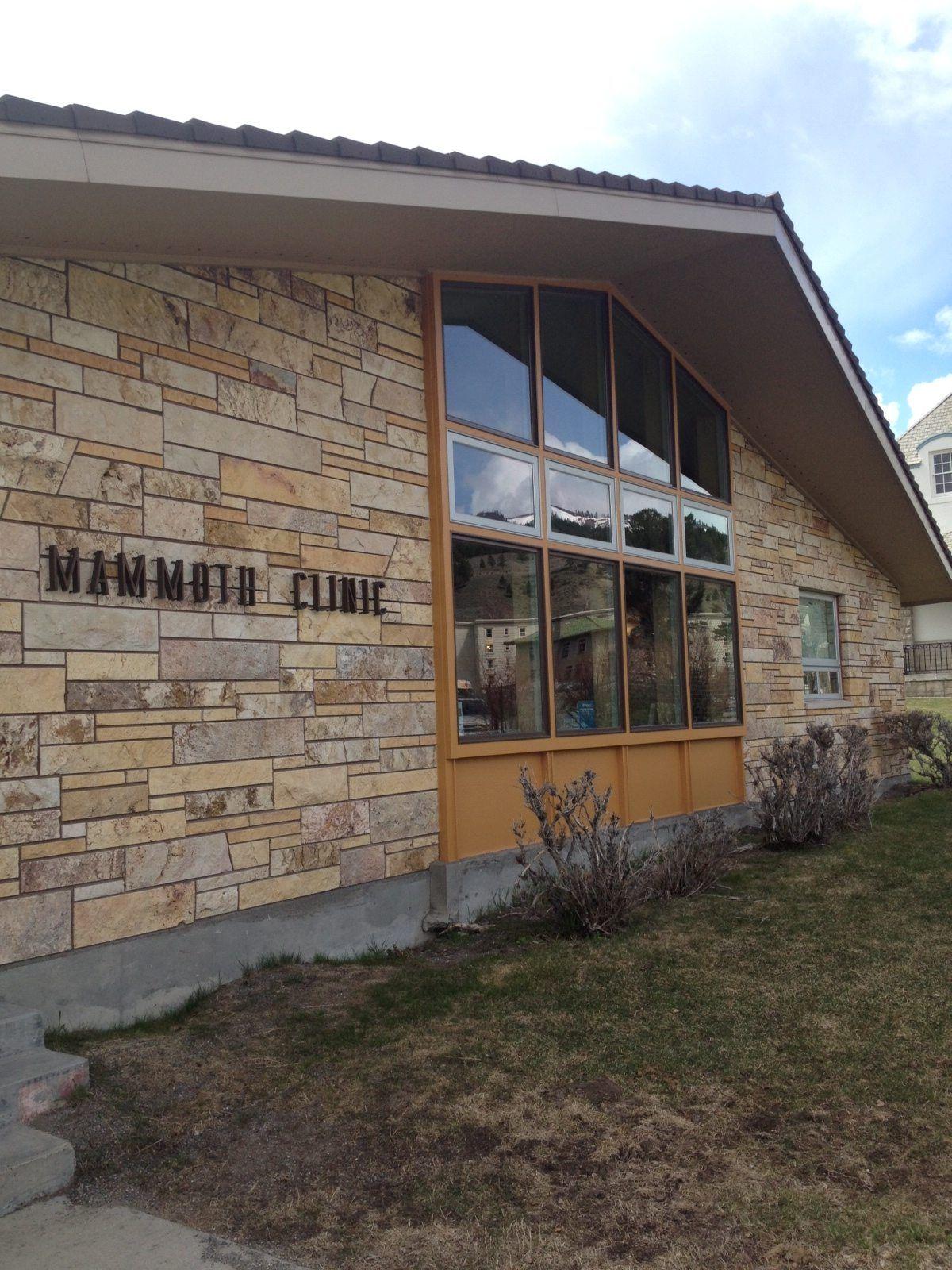

By Jay Lund
A bold idea born of big dreams: that’s how many iconic American companies got their start. It may be the best description of the bill that ultimately established Yellowstone National Park and sparked a worldwide trend of designating parcels of land for public enjoyment. Yet keeping this natural treasure open and accessible to more than 3 million visitors annually presents a unique set of challenges that Yellowstone’s administrators are addressing today with the same innovative spirit that first established the park.
Functioning as a park has an undeniable environmental impact on the very lands those millions visit and enjoy. Yellowstone’s leaders appreciate the fact that they could fall victim to their own success, and in 2010 established a five-year plan to elevate Yellowstone as a world leader in environmental stewardship. In other words, lead by example by being one of the greenest parks in the world. The Yellowstone Environmental Stewardship, or “Y.E.S.” Initiative, is the kind of private/public collaboration you hope makes a meaningful impact – and as a representative of one of the industry brands privileged to participate, I can attest that what we’re working on together is making a difference.
Mountain-high environmental management goals
Yellowstone set ambitious environmental management goals to achieve by 2016. Using 2003 figures as the baseline, Yellowstone leaders said they want to:
- Reduce greenhouse gas (GHG) emissions by 30 percent; and by 2025 achieve a 50 percent reduction in GHG emissions
- Reduce electricity consumption by 15 percent
- Reduce fossil fuel consumption by 18 percent
- Reduce water consumption by 15 percent
- Divert 100 percent of municipal solid waste from landfills
These are bold and audacious objectives considering the park– all 2.2 million acres of it – holds nine visitor centers and museums; more than 2,000 hotel rooms and cabins, 1,500+ buildings, and well over 400 miles of roads (300 of them paved). The magnitude of the effort to bring this initiative across the finish line required a public/private partnership, with an eye on high impact projects small and large. In the end 27 opportunities were highlighted.
Three Ps to Y.E.S.
The key to a successful Y.E.S. Initiative meant embracing three Ps: public-private partnership. The Yellowstone Park Foundation found the right set of corporations and educational institutions ready to support the initiative through products, services, and financial support that helped the park thoughtfully execute the Y.E.S. Initiative and maximize the effort in leading the way for other parks in the National Parks Service.
With two years left in the program, how are we doing? Here are two examples:
Lamar Buffalo Ranch: This site was a prime opportunity for improvement, with sleeping cabins that sit in the Lamar valley inside the park; temperatures reach -40 degrees below zero most winters. New windows were donated, upgrades to insulation and the addition of programmable thermostats in the cabins resulted in a 50 percent reduction in energy use in the first 12 months.
Mammoth Clinic: The most recent priority project in the program, this 1960s era building at the park’s headquarters serves the medical needs of all park staff as well as all visitors to the park each year. Andersen donated windows for the building retrofit, which was completed this past January. Energy data was taken before the remodel, to compare during a 12-month energy consumption analysis. We expect the results to be a significant reduction in energy use by the clinic.
We’re not done yet. We just committed to providing one of our most efficient windows, the 100 Series, to be used in a new dormitory under construction near the site of Old Faithful. These windows are a great example of the unique approach to an environmentally-friendly solution favored in the Y.E.S. Initiative: the window profiles utilize reclaimed wood fiber from our manufacturing operations and have SCS Indoor Advantage Gold certification.
Collaborative success across the centuries
Philosophers, poets and politicians have all contributed to the centuries-long conversation about our country’s natural resources that were eventually designated parklands. Preserving the beauty and vitality of these extraordinary lands ensures our country’s richest assets will be enjoyed by present and future generations to come. The Y.E.S. Initiative is really about “making sustainability more sustainable” or ensuring our national parks always contribute to a greener society. The work we do today is an important investment in that vision, not just in the future potential of our National Parks, but in the past vision and leadership that led to their creation in the first place. It’s just one example of how drawing inspiration from the past helps us unlock the potential for an even greater, greener future.
Jay Lund is chairman, president and CEO of Andersen Corporation.
Protestors target Lloyds AGM over coal investments


Protestors are targeting the Lloyds Bank AGM in Edinburgh today, accusing it of destroying people’s lives and fuelling climate change by bankrolling the global coal industry.
Protestors from the World Development Movement (WDM) are displaying placards reading ‘Lloyds: Stop Bankrolling Coal’ and will play on Lloyds’ marketing with a banner reading ‘Because Climate Change Matters’.
WDM says that Lloyds has invested a total of £3.4 billion since 2009 in mining giants BHP Billiton, Anglo American and Glencore Xstrata, the companies behind the massive Cerrejón mine in Colombia. Cerrejón is the biggest coal mine in South America and is fiercely opposed by local people.
Climate and energy campaigner Alex Scrivener from WDM commented: “The coal industry is destroying lives and livelihoods on every continent with the help of Lloyds and the other coal-addicted big banks. For the sake of the people suffering from coal mining, and the sake of the global climate, Lloyds should pull out of coal.”
Last month the protestors targeted Barclays over the same issue.
Newlight sprints ahead with AirCarbon technology


US telecoms giant Sprint is to be one of the first companies to use AirCarbon, a new carbon-negative material made from greenhouse gas.
The materia,l manufactured by California-based Newlight Technologies, will be used in black and pink cell iPhone cases.
AirCarbon uses a proprietary carbon capture process to convert air and greenhouse gases (GHGs) into a plastic that has similar durability and performance characteristics to petroleum-based plastics. The conversion technology can synthesize high-performance thermoplastics from a wide range of sources, including methane and/or carbon dioxide from agricultural operations, water treatment plants, landfills, anaerobic digesters, or energy facilities.
“AirCarbon offers a new paradigm in which products we use every day, like cellphone cases, become part of the environmental solution,” said Mark Herrema, Newlight Technologies co-founder and ceo, who addressed Business in the Community's Responsible Business Week last year.
“Newlight’s mission is to replace petroleum-based plastics with greenhouse gas-based plastics on a commodity scale by out-competing on price and performance – harnessing the power of our choices as consumers to make change.”
WBI and Sedex team to tackle responsible supply chain data


An online platform where buyers will be able to browse the sustainability credentials of suppliers is under development by the World Bank Institute (WBI) and Sedex.
The free-of-charge Open Supply Chain Platform will enable firms of all sizes to upload, share and track data covering issues such as ethics, labour standards and environmental factors. It is expected to go live later this year.
Sedex and WBI say the platform will enable suppliers to benchmark themselves against core international standards and provide guidance on areas of weakness, in turn enabling them to drive improvements and share information on performance with buyers.
For buyers, the platform will inform sourcing decisions by empowering them to search for, and source goods and services from suppliers that demonstrate a comprehensive understanding of sustainability requirements and commitments.
As such, the developers maintain that it will help create a more level-playing field for supply chain data by offering a range of functionalities to drive sustainability performance in global supply chains.
Carmel Giblin, CEO at Sedex commented: “The Open Supply Chain Platform will deliver a step change in the uptake of responsible behaviours and practices by businesses. It will foster governance, sustainability and social development impacts in global supply chains.”
Benjamin Herzberg, Program Lead, Open Private Sector, World Bank Institute, added: “The World Bank is committed to scaling up development impacts and achieving the goals of ending extreme poverty and boosting shared prosperity. It is thus essential that we encourage the private sector to adopt open and collaborative behaviours that favor social, environmental and governance outcomes. That’s the purpose of our Open Private Sector Platform.”
Picture credit: © Macrovector | Dreamstime.com
How to Get Consumers to Walk the Sustainability Talk When it Comes to Fashion

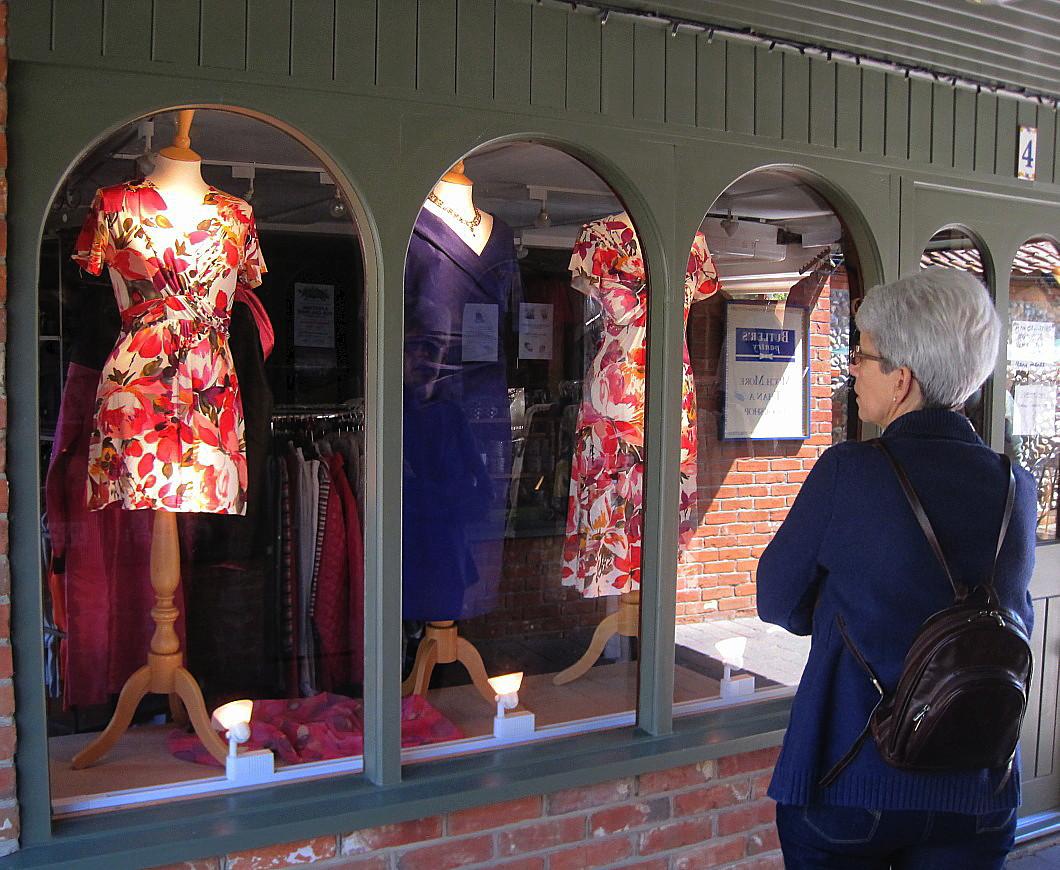
Marshall McLuhan famously said: "There are no passengers on spaceship Earth. We are all crew." While it can be applied to every sustainable challenge, this notion is clearly reflected in business efforts to be socially responsible when it comes to the role of consumers.
The idea was and still is that companies’ increasing efforts to make their value chain more sustainable need to be complemented by a growing consumer consciousness about sustainability that will translate to a greater support of companies that move away from ‘business as usual.’ In other words: Companies can’t do it alone. They need consumers on board.
Now, if you look at studies exploring consumer attitudes, you find that consumers indeed seem to be more conscious about sustainability and are more willing to incorporate it into their decision-making process.
For example, according to a 2013 Cone Communications study, 87 percent of consumers consider a company’s social and environmental commitment before deciding what to buy or where to shop. Another study conducted by Nielsen found that 50 percent of global consumers surveyed are willing to pay more for goods and services from companies “that have implemented programs to give back to society.”
Yet, when it comes to actual behavior, (almost) all of these good intentions disappear somehow, and sustainability or corporate responsibility doesn’t seem to make much of a difference for most consumers. Hence my question is: Why is it that whenever we find ourselves at the store or the supermarket we forget all the good intentions we had back home?
And there might not be a better place to look for answers than in fashion.
After the tragic Rana Plaza factory collapse in Bangladesh last year, where 1,129 garment workers were killed, there was a hope that this event will make a difference not just for apparel companies, but also for consumers. Yet, one year later, as we learn from a new BBMG report, the change in consumer behavior hasn’t been seen yet.
This report is especially interesting as it looks into the habits of 'aspirational consumers,' ones that were identified in a 2012 study “Re:Thinking Consumption,” published by BBMG, GlobeScan and SustainAbility as the largest consumer segment seeking both sustainability and consumption. “They are materialistically oriented while at the same time aspiring to be sustainable in their purchases and beliefs. Style is important to them, and they are more likely than any other group to be influenced by brands, to try new things and they love to shop,” the reports authors said.
Based on conversations with 70 members of The Collective, BBMG’s proprietary community of aspirational consumers, BBMG’s new report was aiming to see how, if at all, their shopping habits have been affected in the last year. It found that “despite the major news coverage and industry moves since the collapse, consumers’ shopping habits haven’t shifted in any substantial way.”
According to BBMG’s research, 70 percent of consumers chose practical purchase drivers (price, design, comfort, fit, etc.) as the only considerations when buying apparel, and only 4 percent acknowledged that safe working conditions for garment workers make it into the consideration set when shopping.
Another interesting finding was that “nearly 50 percent of these shoppers chose mainstream fast fashion brands as their favorites and 91 percent had no idea where or by whom their favorite brands’ clothing is sewn.” At the same time, BBMG notes consumers are not satisfied with this lack of information and “want more information to help them make better decisions.”
So one issue is clearly the lack of information about companies’ level of corporate responsibility. For one thing, we still don’t have sufficient objective measurements or tools to help us understand which companies are more responsible than the others. What we do have are mostly companies’ own reports on their CSR efforts, which can be very subjective to put it politely.
In addition, even companies that are recognized (by other parties, not just by their own people) as sustainability leaders usually fail to effectively communicate their sustainability efforts. For example, you need to have the skills of an NYPD detective to find anything about Nike’s impressive work on its website, or any substantial reminder of the work companies like Puma, Adidas or Levi’s do on social media, not to mention their products (although Levi’s is making a greater effort with their care tags).
The issue is, however, not just the lack of information, but also the fact that sustainability is missing in the stories these brands are telling. This is not necessarily about telling a sustainability story (like Patagonia does for example), but as Henk Campher, VP of business and social purpose at Edelman, explains sustainable branding is about integrating sustainability into the brand story in a way and context that people can relate to -- helping them to understand why they should give a damn about it when shopping.
Another way to look at it is that, in order to make consumers give a damn about sustainability, companies need to focus not necessarily on their products’ functional benefits (durability or design for example), but on emotional, self-expressive and social benefits -- associated with consumers’ “I feel”, “I am” and “I am with” statements respectively -- when buying or using the brand. In other words, customers need to identify sustainability with terms like excitement, sophistication, fun or empowerment rather than with recyclable or waterless to find it attractive.
So basically it seems that companies need to do a better job in order to get consumers walk the sustainability talk. Can it work? Probably not all the time, as we can learn from the study with the self-explanatory “Sweatshop labor is wrong unless the shoes are cute,” where researchers found that “though consumers say they care about sweatshop labor and prefer products made without it … self-interested motivation, the availability of cognitive resources, and a flexible moral context limit their ability to turn their feelings into action.”
Still, companies should try harder. After all, weren’t they the ones getting us to believe it’s actually act like “passengers on spaceship Earth” in the first place?
Image credit: Snapshooter46, Flickr Creative Commons
$47 Million in DOE Funding for Three Offshore Wind Demo Projects
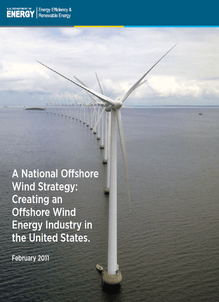

Nearly 80 percent of U.S. electricity demand comes from cities and towns in coastal U.S. states. Announcing the latest in a series of initiatives aimed at spurring development of a “world-class” U.S. offshore wind energy industry capable of helping meet that demand in a clean, renewable and sustainable fashion, the U.S. Department of Energy (DOE) on May 7 said it will provide up to $47 million each over the next four years to “three pioneering offshore wind demonstration projects.”
A total of 12 direct-drive wind turbines with an overall 67 megawatts (MW) of rated power generation capacity are to be deployed across the Fishermen's Energy, Principle Power and Dominion Virginia Power offshore wind demonstration projects off the coasts of Atlantic City, N.J.; Coos Bay, Ore.; and Virginia Beach, Va., respectively, according to a DOE news release.
All three projects entail making use of direct-drive wind turbines and innovative, “homegrown” solutions to offshore wind farm design, engineering and construction that could pave the way to developing cheap, plentiful supplies of renewable power for cities and communities along the U.S. East and West coasts.
Tapping a huge, untapped clean energy resource
Commenting on the May 7 funding announcement, Energy Secretary Ernest Moniz stated:
“Offshore wind offers a large, untapped energy resource for the United States that can create thousands of manufacturing, construction and supply chain jobs across the country and drive billions of dollars in local economic investment.“The Energy Department is working with public and private partners to harness this untapped resource in a sustainable and economic manner. The offshore wind projects announced today further this commitment -- bringing more clean, renewable energy to our homes and businesses, diversifying our energy portfolio, and reducing costs through innovation.”
Assessing offshore wind energy resources along the U.S. East Coast, researchers at Stanford University concluded there was enough clean, renewable power potential there to meet the electricity needs of at least one-third of the entire U.S., or the entire East Coast from Maine to Florida.
Following through on the "U.S. National Offshore Wind Strategy"
Expanding its efforts to promote and foster creation and development of “world-class” renewable energy and clean technology industries and markets here in the U.S., the Obama administration in February 2011 launched the “National Offshore Wind Strategy: Creating an Offshore Wind Energy Industry in the United States.”
In December 2012, DOE announced funding for seven offshore wind demonstration projects that have focused on design, engineering and permitting. DOE funding for the three offshore wind projects announced May 7 aims to realize the goal of deploying offshore wind installations in U.S. waters by 2017.
Three miles off the coast of Atlantic City, N.J., Fishermen's Energy will install five, 5-MW direct-drive wind turbines. Acting as a field laboratory for researchers to study offshore winds and the interaction among turbines, the offshore wind power installation will make use of “an innovative, U.S.-developed twisted jacket foundation that is simpler and less expensive to manufacture and install than traditional offshore wind foundations,” the DOE explained.
Demonstrating “an innovative solution for deep-water wind turbine projects and lowering costs by simplifying installation and eliminating the need for highly specialized ships,” Principle Power will install five, 6-MW direct-drive wind turbines off the Coos Bay, Ore. coast.
WindFloat semi-submersible floating foundations developed here in the U.S. will support the turbines, which will be set in water more than 1,000 feet deep, DOE highlights in its news release. “More than 60 percent of U.S. offshore wind resources are found in deep waters,” DOE notes, “including the entirety of the West Coast.”
Twenty-six miles off the coast of Virginia Beach, Dominion Virginia Power will deploy two 6-MW direct-drive wind turbines that also makes use of a U.S.-designed twisted-jacket foundation. In addition to demonstrating installation, operation and maintenance methods, a hurricane-resistant design will be tested as part of Dominion's project.
Image and video credits: 1) U.S. DOE; 2) Navigant Consulting; 3) Principle Power
Coca-Cola Drops Controversial Ingredient in Response to Teen’s Petition
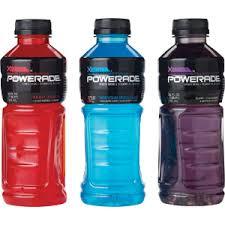

Chances are you have never heard of brominated vegetable oil (BVO), or at least not until recently.
I know I hadn’t, but then I tend to avoid foods with ingredient lists that read like Russian novels. It turns out to be the same chemical used in flame retardants. Studies have shown that BVO can build up in human tissue and lead to lesions, memory loss and nerve disorders. It can also compete with iodine in the body. So, unless you are concerned about spontaneous human combustion, there is really no good reason to be ingesting this stuff.
Brominated vegetable oils were approved for use in soft drinks by the FDA in 1977 at a level of 15 parts per-million (PPM) for the purpose of stabilizing artificial flavorings. They have been found in roughly 10 percent of all soft drinks. That was until recently when Coca-Cola, following the lead of its rival Pepsi-Cola, removed the ingredient from its Powerade sports drink after Pepsi removed it from Gatorade.
The moves came after a petition on Change.org questioned why this ingredient was contained in a drink that was being marketed to health-conscious consumers. The petition was started by 15-year-old Sarah Kavanaugh and received more than 200,000 signatures.
According to Kavanugh, “A couple months ago, I found out that one of my favorite drinks, Gatorade’s Orange, contained brominated vegetable oil (BVO). According to Scientific American and other news reports, BVO is patented as a flame retardant and has been banned in Europe and Japan. So I started a Change.org petition asking Gatorade to stop using it. More than 200,000 people signed my petition on Change.org and we won! But I learned that BVO is also in other drinks, like Powerade’s red fruit punch that is actually sold in my school!”
So, she went back and started another petition, this one asking Coke to remove the ingredient from Powerade. By the time the second petition had reached 50,000 signatures, Coca-Cola had already responded.
This blog appeared in Coca-Cola’s corporate website.
“At The Coca-Cola Co., we are committed to evolving our beverages and portfolio options through ongoing innovation. As a part of this commitment, The Coca-Cola Co. is transitioning from the use of brominated vegetable oil (BVO) to sucrose acetate isobutyrate (SAIB) and/or glycerol ester of rosin (singly or in-combination). The global transition will be made across a variety of formulas from ready-to-drink (bottles and cans) to fountain machines. This transition allows us to become consistent with the ingredients we use throughout the world.”
The posting states that the transition of Powerade Fruit Punch and Powerade Strawberry Lemonade bottle varieties has already occurred and that various other citrus-flavored products will transition away from BVO by the end of this year.
This is a great example of the power of public opinion in an open society, empowered by the connectivity and information–sharing potential of the Internet. It only works, however, if companies are open and transparent about their ingredients, methods and processes.
If they are allowed to maintain secrecy, as some are today, regarding the inclusion of controversial ingredients, such as those derived from genetically modified organisms (GMOs), there is no opportunity for an informed public to take action on its own behalf.
Image credit: Coca-Cola Co.
RP Siegel, PE, is an inventor, consultant and author. He writes for numerous publications including Justmeans, ThomasNet, Huffington Post, and Energy Viewpoints. He co-wrote the eco-thriller Vapor Trails, the first in a series covering the human side of various sustainability issues including energy, food, and water in an exciting and entertaining romp that is currently being adapted for the big screen. Now available on Kindle.
Follow RP Siegel on Twitter.
Subway CEO 'Not Concerned' About a Federal Minimum Wage Increase
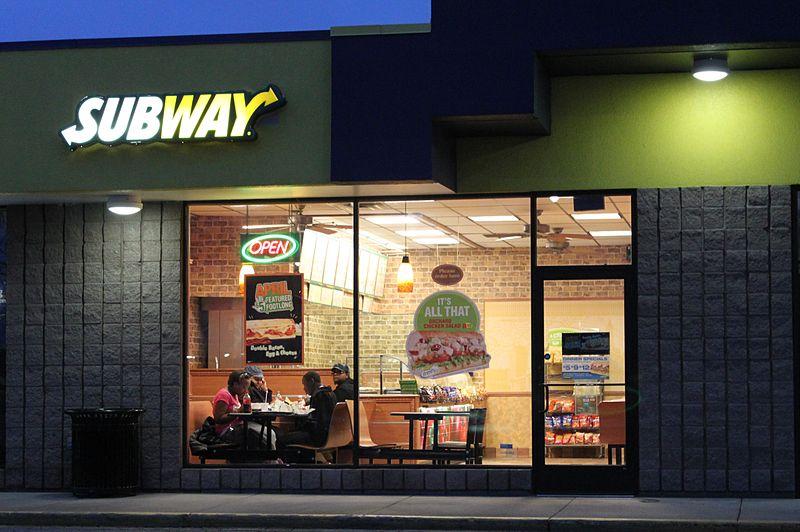

Subway is a major fast food chain with more than 41,000 restaurants in 106 countries. CNBC calls it the “largest restaurant chain in the world.” Despite its large size, the company isn't afraid of an increase in the federal minimum wage. Subway CEO Fred DeLuca recently said during an interview with CNBC that he is “not concerned” about the federal minimum wage increasing.
When he “started in the business, the minimum wage was $1.25,” and he has “seen an enormous number of wage increases,” DeLuca told CNBC. He added that increasing the federal minimum wage “won't have a negative impact hopefully, and that's what I tell my workers.” That is a bit of a change from 2013 when Deluca told CNBC that “doing a sharp raise all at once is a bad idea.” However, he added that “minimum-wage workers deserve to make more and a little bit of an increase makes sense to me.”
Recently, Subway has been embroiled in controversy concerning a food additive and a recent CNN report. The report found that individual Subway franchises have been found violating pay and hour rules in more than 1,100 investigations from 2000 to 2013. CNN looked at data from the Department of Labor’s Wage and Hour Division and found the investigations combined have “about 17,000 Fair Labor Standards Act violations and resulted in franchisees having to reimburse Subway workers more than $3.8 million over the years.” The report notes that Subway has over 26,000 locations throughout the U.S. and “each franchise owner is treated essentially as a small business.”
During the CNBC interview, DeLuca responded to CNN’s report. “First of all, the fact that we have so many stores has an impact on how many violations there are,” he said. “If we had 5,000 stores, there would be a smaller number than if we had 25,000 ... The vast majority of our owners are doing the right thing but some are not,” he added. Deluca also said that he thinks there are “a lot of first-time business people that enter into business in Subway, and they might not be as sophisticated in what to do.” He pointed out that Subway started partnering with the Department of Labor “maybe three or four years ago” to help educate its owners “on the right thing to do.”
Dairy Queen CEO chimes in, says people need a fair wage
Another CEO of a fast food company recently mentioned raising the federal minimum wage. The CEO of Dairy Queen, John Gainor, said in an interview with CNN earlier this month that, “People need to be paid a fair wage.” While he didn’t speak out in favor of raising the federal minimum wage to $10.10 an hour, he did say that low wages can encourage more turnover, and that is expensive for companies.
Some companies already pay more than the federal minimum wage of $7.25 an hour. Costco pays its employees $11 an hour, and last year CEO Craig Jelinek spoke out in favor of a bill that would raise the federal minimum wage to $11.50 an hour. While Gap, Inc. currently pays $9 an hour, it announced in February that it will increase the minimum hourly rate it pays its American employees to $10 an hour in 2015.
The majority of small business owners also favor raising the federal minimum wage, according to a survey conducted by Small Business Majority and published in March. The survey found that most small business owners support increasing the federal minimum wage to $10.10 an hour and adjusting it yearly to reflect the cost of living. The majority of small business owners surveyed (82 percent) do not pay any of their employees the current federal minimum wage of $7.25 an hour. Only 18 percent pay their employees the current federal minimum wage.
Photo: Dwight Burdette